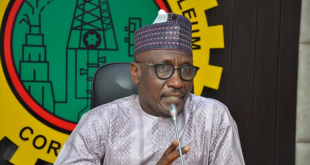
HAVANA, Feb 05 (IPS) – Jorge Sarmientos said he made a good investment when he bought an electric motorcycle to get around and avoid the anxiety suffered by the users of Cuba’s deficient public transportation system or the high prices of private alternatives.
“It was expensive, but I gained independence,” Sarmientos, a Havana-based accountant, told IPS. “Transportation has never been good here. When there is no shortage of buses, there are shortages of spare parts or fuel. Prices should be lowered or there should be facilities for more people to acquire electric vehicles.”
Official data indicate that half a million electric motorcycles are on the roads in this Caribbean island nation of 11 million inhabitants, a form of transportation that helps people and families get around.
Over the last decade, the use of electric vehicles has increased in Cuba, based on customs authorizations for their importation.
More recently, the domestic industry has begun to assemble different models, including electric bicycles and three-wheelers, using parts imported largely from China.
But the fact that they are mainly sold in foreign currency is a hurdle to expanding sales.
The cheapest models in state-owned stores exceed 1,000 dollars, while others go for as much as 6,000 dollars.
In Cuba, the average monthly salary is equivalent to about 35 dollars according to the official exchange rate, or about 16 dollars in the informal market.
According to reports, almost 40 hybrid buses (alternating diesel and electricity) have been added to Havana’s deteriorated fleet of public buses in recent years, a technology that saves 25 to 30 percent of fuel and is less polluting.
But the severe internal economic crisis and the shortage of foreign currency are hindering actions to increase the number of 100 percent electric vehicles in order to gradually decarbonize public transportation.
Some companies and institutions have acquired electric cars, which bring reductions in maintenance costs.

Local solutions
In the case of Havana, from 2019 to 2023 the Neomovilidad project was implemented, which among its objectives aimed to strengthen the regulatory framework for an efficient transition to a low-emission urban transportation system.
In addition to prioritizing variables such as a gender approach and the inclusion of different age groups, the project provided a pilot public bicycle rental station, run by a local development project led by young people.
It also created three routes of three-wheeled electric ecotaxis driven mainly by women in outlying neighborhoods of Boyeros, one of the 15 municipalities that make up Havana.
The three-wheelers are light, motorized vehicles with a capacity for six passengers in the back, similar to the autorickshaws or tuktuks that are common in Asia. Here they are also called motocarros or mototaxis.
“I think they are a great option for getting around quickly over short distances, and at affordable prices,” retiree Gloria Almaguer, a resident of the Fontanar neighborhood in Boyeros, told IPS. “The bad thing is that there are not enough to cover demand, they can carry only a few people, and there are certain times of day when they ‘vanish’.”
The Neomovilidad project was executed by Havana’s General Directorate of Transportation, implemented by the United Nations Development Program (UNDP) office in Cuba and financed by the Global Environment Facility (GEF).
Other fleets of ecotaxis provide service in the capital’s municipalities of Old Havana, Central Havana, Guanabacoa, Playa and Plaza de la Revolución, also with UNDP support. These are all initiatives that contribute to the national commitment to mitigate climate change.
With routes ranging from two to four kilometers and low prices, a little more than a hundred of these vehicles help provide a solution for sustainable micro-mobility in urban areas.
In other Cuban cities, similar three wheelers with internal combustion engines are in service.
One challenge is that the vast majority of ecotaxis and electric vehicles depend on the national electric grid to recharge their batteries. The ecotaxis recharge during the night at their terminals in the parking lots of public entities, and privately owned vehicles do so at their owners’ homes.
This is because so far there is no infrastructure that would allow electric vehicles to be recharged in a network of service stations.
Around 95 percent of Cuba’s electricity generation relies on fossil fuels.
The government considers it a matter of national security to transform the energy mix, and aims for more than 30 percent of electricity to come from clean energies by 2030, a goal that will be difficult to achieve due to the need for a high level of investment.

New fuel prices
A majority of the Cuban population depends on the public transportation system, based mainly on buses and other fossil fuel-consuming vehicles.
In Havana, home to 2.1 million inhabitants, “less than 300 buses are working, a city that in the 1980s had 2,500 buses and only four years ago had 600,” said Transport Minister Eduardo Rodríguez Dávila during a television appearance in October 2023.
The greatest impact falls on those with the lowest purchasing power, since buses are the most affordable means of transportation.
The panorama is similar in Cuba’s other 14 provinces. Alternative transport in urban, suburban and rural settlements includes modified trucks, traditional horse-drawn carriages and bicycle cabs which carry one or two passengers and are pedaled by the driver.
In Havana, estimates place the total number of passengers who use private transport at around 25 percent, generally in old U.S.-made cars, the so-called “almendrones” – private cabs with fixed routes – which run on gasoline or diesel and are not affordable for everyone.
Together with the deterioration of the vehicle fleet, the chronic shortage of spare parts, lubricants and other supplies, and the migration of drivers to sectors with greater economic benefits, the fuel shortage has been one of the main causes of the irregular public transportation service, which has been accentuated in the last five years.
“You can spend an hour waiting, or more. A lot of times I’m late for class, even though I get up very early. I can’t afford a private car every day. It’s increasingly difficult to get anywhere,” stressed architecture student Yenia Hernández in an interview with IPS, as she waited at a bus stop with dozens of other people in the Central Havana municipality.

Energy crises have become more recurrent since 2019, in parallel with the decline of the domestic economic situation and the lack of foreign currency.
According to the authorities, this situation has multiple causes, from breach of contract by suppliers to U.S. government sanctions that hinder access to credit and services from international banks.
In 2021 Cuba imported 126,000 tons of gasoline, in 2022 some 192,000 tons, and in 2023 around 203,000 tons. Despite the increase, the figure remains below the demand of about 360,000 tons, Energy and Mines Minister Vicente de la O Levy said in a televised statement on Jan. 8.
On the other hand, this island nation needs 1.8 billion dollars to cover its annual diesel needs.
“In 2023, 609,000 tons of diesel could be imported, for about 600 million dollars (one third),” added the Energy and Mines Minister.
As of Feb. 1, an increase in the price of gasoline and diesel was planned, in order to bring the selling price in Cuban pesos in line with the official rate of the dollar, regulate sales and sell a portion only through dollar-backed cards, in order to guarantee resupply with the foreign currency, according to the government.
But the measure was postponed until further notice due to a “cybersecurity incident” caused by “a virus from abroad” that affected the system of fuel sales, which is being investigated, official information said.
The strategy to eliminate subsidies projects, as of Mar. 1, an increase in interprovincial transportation fares, with hikes of almost three times the cost of bus fares and six to seven times the cost of train tickets.
While the fares for part of the public transport service will remain unchanged, in the case of Havana, the fare for electric three wheelers will rise from four to 10 pesos (0.03 to 0.08 dollars).
The increases in fuel prices and transportation fares are in addition to the package of provisions that includes tax and tariff modifications as of Jan. 1 and which, according to government officials, are aimed at “rectifying distortions” in the economy and boosting its recovery.
“The only thing I see is that some transportation will be more expensive, but there won’t necessarily be more vehicles, or more modern vehicles with better service,” Reynaldo Martín, an electrical engineer living in Old Havana, told IPS. “Wages remain the same and that means I can’t even dream of buying a bicycle.”
© Inter Press Service (2024) — All Rights ReservedOriginal source: Inter Press Service
 Top Naija News: Nigerian News, Breaking News Nigeria and World News Top Naija News is a daily news publication in Nigeria, delivering the latest breaking news in Nigeria and around the world.
Top Naija News: Nigerian News, Breaking News Nigeria and World News Top Naija News is a daily news publication in Nigeria, delivering the latest breaking news in Nigeria and around the world.



